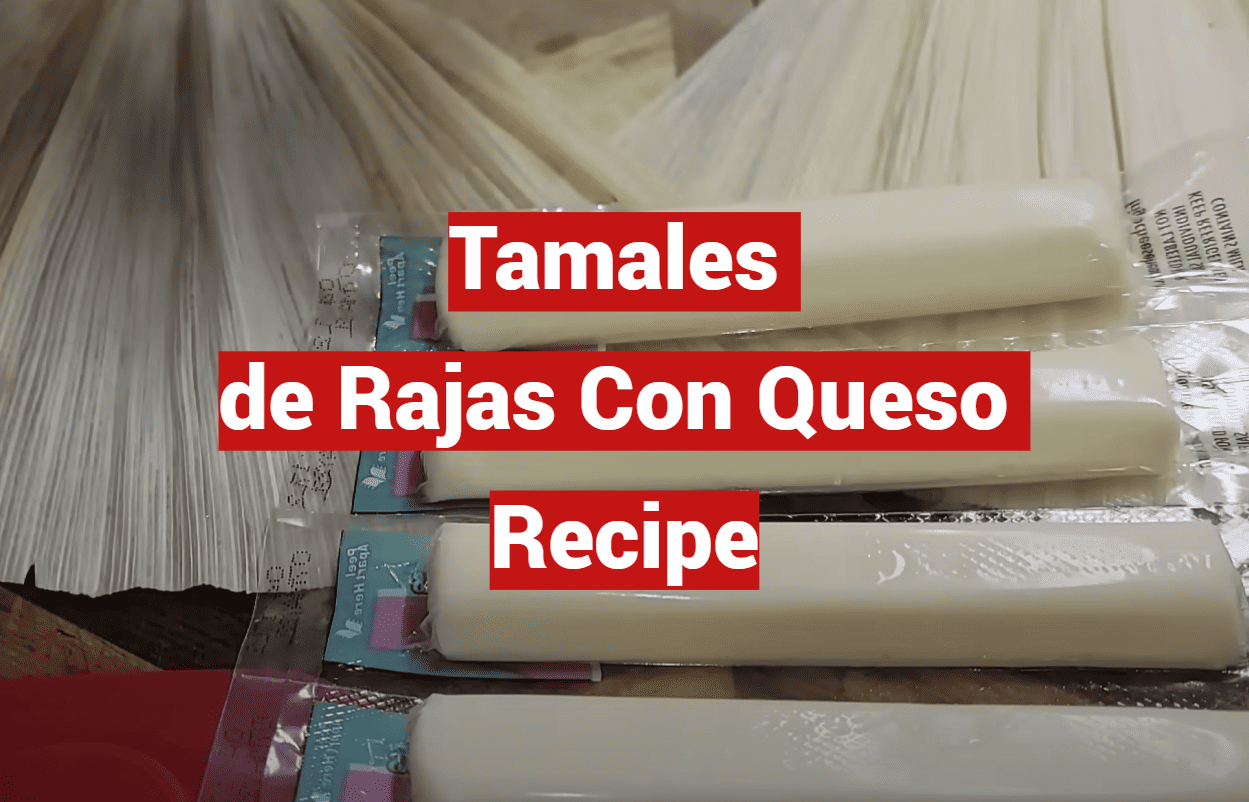This iconic comfort food isn’t just a meal—it’s a celebration of culture and connection. Steamed masa pockets filled with roasted peppers and melted cheese have anchored family gatherings for generations. Today, we’ll show you how to craft this timeless favorite with authentic techniques and a dash of heart.
Whether you’re hosting a festive dinner or craving a taste of tradition, this guide simplifies the process. You’ll learn to balance smoky poblano strips with creamy textures, all wrapped in tender masa. While the prep work takes 1-2 hours, every step builds toward a truly unforgettable result.
We’ve designed this walkthrough for cooks of all levels. From selecting fresh corn husks to achieving that perfect fluffy-yet-firm consistency, you’ll gain confidence through clear instructions. Bonus tips help avoid common pitfalls, ensuring your creation shines.
Key Takeaways
- Discover the cultural importance of this dish in Mexican celebrations
- Learn how quality ingredients like fresh masa elevate flavor
- Understand the time investment required for authentic preparation
- Gain adaptable techniques for both new and seasoned cooks
- Master the art of balancing smoky and creamy textures
Introduction to This Classic Mexican Dish
More than just a dish, these masa bundles carry stories of family and festivity. For centuries, steamed corn dough parcels have symbolized unity across Mexico. They appear at birthdays, weddings, and holidays, linking generations through shared effort and flavor.
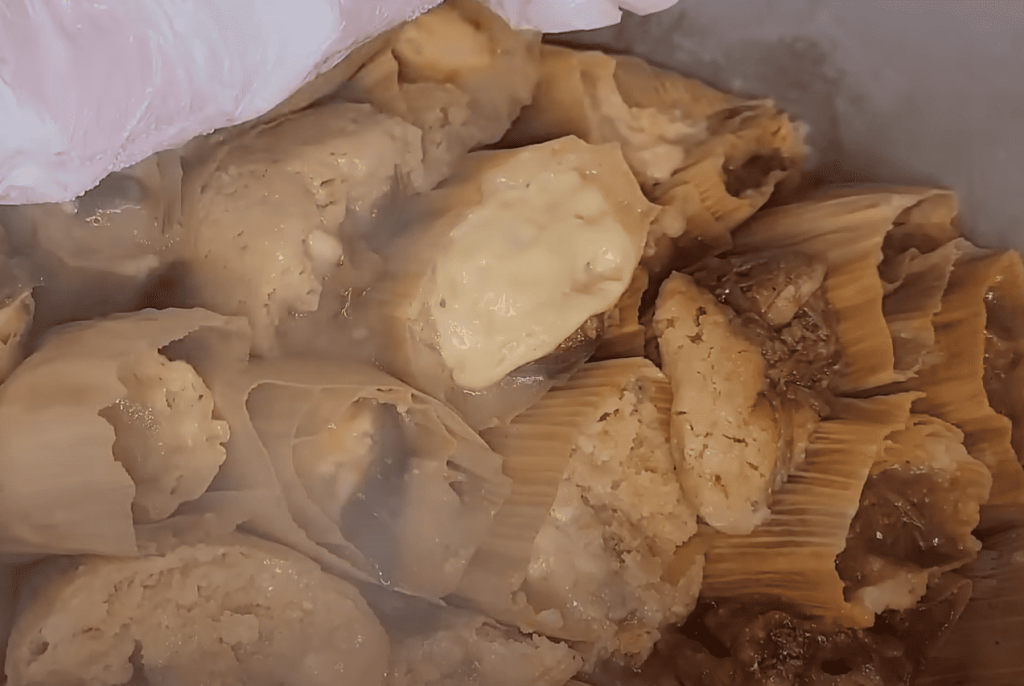
An Overview of Cultural Significance
Chef Carlos Cruz of Las Vegas’ China Poblano recalls childhood Christmases in his family’s adobe kitchen. His mother and aunts would prepare hundreds of these treats, with everyone pitching in. “We’d work until midnight,” he shares. “The meal couldn’t start until they were done—it’s what held us together.”
This tradition stretches back to ancient Mesoamerica. Early versions used local corn and fillings, evolving into today’s diverse regional styles. The act of wrapping masa in husks remains unchanged, preserving history in every bite.
Why Families Love This Version
Roasted peppers and gooey cheese create crowd-pleasing flavors. Kids enjoy the mild heat, while adults appreciate creamy textures. Prep becomes bonding time—spreading dough, folding husks, and laughing over imperfect shapes.
Modern cooks value the recipe’s flexibility. Store-bought masa harina cuts prep time without sacrificing taste. Yet the heart remains: a dish meant to be made (and shared) with love.
Authentic tamales de rajas con queso: A Cultural Culinary Journey
Every bite tells a story older than your grandmother’s recipe box. This beloved dish bridges ancient traditions and modern kitchens through flavors that comfort and connect.
From Ancient Hearth to Family Table
Chef Carlos Cruz still remembers the rhythm of his mother’s hands shaping masa. “She’d test the dough’s warmth,” he recalls, “adjusting broth until it hugged your finger like a soft blanket.” Through years of Christmas Eve prep sessions, he learned textures matter as much as taste.
Roasted peppers and stretchy cheese became the gateway for younger palates. While adults enjoyed spicier varieties, kids gravitated toward creamy pockets. The combo’s simplicity hid clever cultural wisdom—mild heat introduced children to traditional ingredients without overwhelming them.
Oaxacan cheese and charred poblanos weren’t accidental choices. These staples symbolized resourcefulness, using readily available ingredients to create magic. Families passed down techniques for roasting peppers until their skins blistered like old parchment.
Leftovers transformed into morning treasures. Carlos laughs describing his hack: “Cold ones sizzle on the griddle, their husks crisping like autumn leaves. Paired with spiced coffee? That’s how you start a perfect day.”
Today’s home cooks inherit more than a meal. They join generations who turned simple ingredients into edible heirlooms—one steamy bundle at a time.
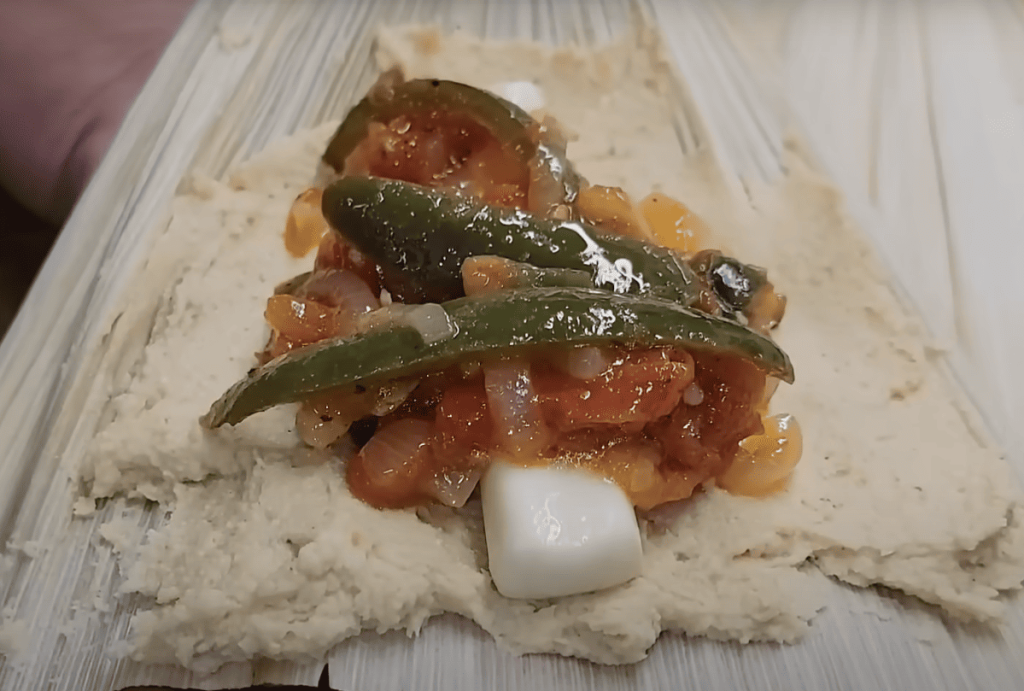
Essential Ingredients and Preparation Tips
The foundation of any great dish lies in its components—selecting the right elements transforms simple recipes into memorable experiences. Start with premium masa harina, the backbone of your dough, and fresh poblano peppers that sing with smoky depth. Let’s break down what makes these ingredients shine.
Selecting the Perfect Masa Harina and Cheese
Not all corn flours are created equal. Brands like Maseca deliver reliable results for beginners, while Masienda’s stone-ground variety offers artisanal texture. For richer flavor, mix masa harina with broth instead of water—this trick adds savory complexity.
“Great masa should feel like cool beach sand—smooth yet gritty enough to hold its shape,” notes Austin-based cooking instructor Rosa Méndez.
| Cheese Type | Texture | Best Use |
|---|---|---|
| Queso Fresco | Crumbly | Subtle salty notes |
| Oaxacan | Stretchy | Melty centers |
| Monterrey Jack | Creamy | Quick melts |
Using Poblano Peppers and Corn Husks for Authentic Flavor
Choose poblano peppers with glossy, firm skins—their mild heat balances creamy cheeses beautifully. Roast until charred, then steam in a sealed container for easy peeling. Slice into thin strips (called rajas) for even distribution.
Soak corn husks in warm water for 30 minutes. Test readiness by bending—if they crack, extend soaking time. Pat dry thoroughly to prevent soggy dough. Pro tip: Save larger husks for wrapping and smaller ones for tying bundles.
Step-by-Step Cooking Process
Transforming humble ingredients into culinary treasures requires patience and precision. Let’s break down each stage to ensure your efforts yield tender, flavorful results every time.
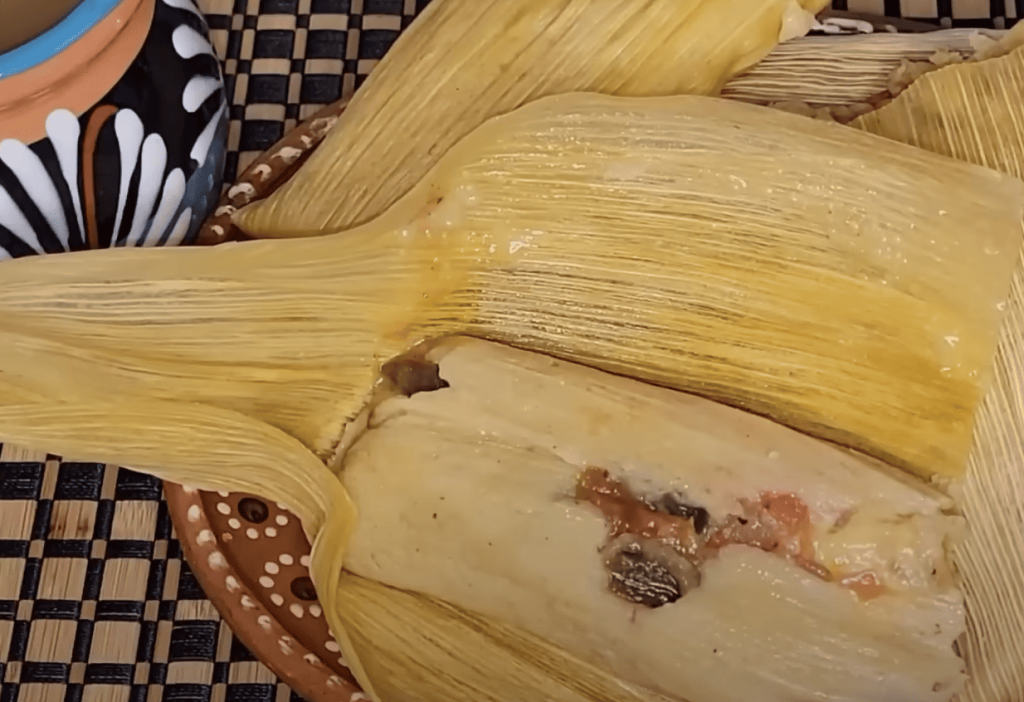
Prepping: Soaking Corn Husks and Mixing the Masa
Start by submerging dried husks in warm water for 30 minutes. This softens them, preventing cracks during assembly. Test flexibility by bending a husk—if it snaps, soak longer.
Combine masa harina with baking powder and salt. Gradually pour in warm broth while kneading for 8-10 minutes. “The dough should stick slightly to your palm but release cleanly,” advises chef Rosa Méndez. Proper hydration ensures fluffy texture.
Roasting Poblano Peppers and Assembling
Char whole peppers over medium heat, rotating every 2-3 minutes. Seal them in a bag for 5 minutes—the steam loosens skins. Peel, deseed, and slice into strips.
Spread ¼ cup masa on each husk’s smooth side. Add pepper strips and cheese, leaving 1-inch borders. Fold sides inward, then tie the bottom with a husk strip. Avoid overpacking—fillings expand during cooking.
Steaming to Perfection: Timing and Techniques
Arrange bundles upright in a steamer with open ends facing up. Keep water ½ inch below the insert to prevent sogginess. Cover with a damp cloth and lid.
Steam for 75 minutes on medium-low heat. Refill the pot with boiling water as needed—never let it dry out. Test doneness by peeling a husk; cooked masa releases easily.
Tips, Variations, and Expert Insights
Unlocking new flavor dimensions transforms familiar dishes into personalized masterpieces. Whether adapting for dietary needs or experimenting with bold combinations, these professional strategies help you craft crowd-pleasing creations.
Cheese Choices That Elevate Your Dish
Oaxaca cheese melts into silky ribbons, while panela holds its shape like edible confetti. Mozzarella offers crowd-friendly familiarity—ideal for mixed-age gatherings. For tangy contrast, try crumbled cotija sprinkled over filling strips before wrapping.
“Always set aside ½ cup of grated cheese for topping steamed bundles—it creates a golden crust when reheated.”
Protein boosts? Fold shredded chicken into pepper strips. Sautéed onions add caramelized sweetness. Mix poblano and serrano peppers for layered heat—remove seeds to tame intensity.
Smart Prep and Flavor Customization
- Refrigerate leftovers up to 5 days (freeze 6 months)
- Reheat in microwave (90 seconds) or oven (350°F/15 mins)
- Balance salt by tasting filling before wrapping
For large batches, measure ingredients in cups to maintain ratios. Add tablespoon amounts of smoked paprika or epazote to masa for earthy depth. Assembly-line setups save time—set aside stations for spreading, filling, and folding.
Remember: Thinner masa layers (¼ cup per husk) prevent doughy textures. Let bundles rest 10 minutes after steaming—this firms them up beautifully.
Serving Suggestions and Pairing Ideas
The final flourish of your meal lies in thoughtful pairings that enhance every bite. Let’s explore combinations that honor tradition while satisfying modern palates.
Drinks and Dips That Shine
Champurrado, Mexico’s velvety chocolate drink, wraps smoky pepper fillings in warmth. Its cinnamon notes dance with melted cheese beautifully. For mornings, café de olla—spiked with piloncillo sugar—cuts through rich flavors like sunshine through mist.
Bright green tomatillo salsa adds zingy contrast to creamy centers. A spicy red version? Perfect for heat-seekers. Balance them with cooling avocado crema—just blend ripe fruit with lime juice and a teaspoon of salt.
Fluffy Mexican rice soaks up savory drippings without overpowering. Quick guacamole (4 ingredients!) brings freshness: mash avocados, add diced onion, a teaspoon of lime zest, and chopped cilantro.
“Leftovers become breakfast magic,” says Chef Carlos Cruz. “Heat them on a dry comal until husks crisp—serve with steaming coffee. The size doesn’t matter when flavors sing this loud.”
For gatherings, arrange bundles on woven trays with lime wedges. Scatter pomegranate seeds for color. Remember: smaller sizes pair well with multiple side dishes, while larger ones stand alone proudly.
Let corn husks peek from platters as edible wrapping art. Fresh epazote leaves make fragrant garnishes. This presentation honors the recipe’s roots while inviting guests to dig in joyfully.
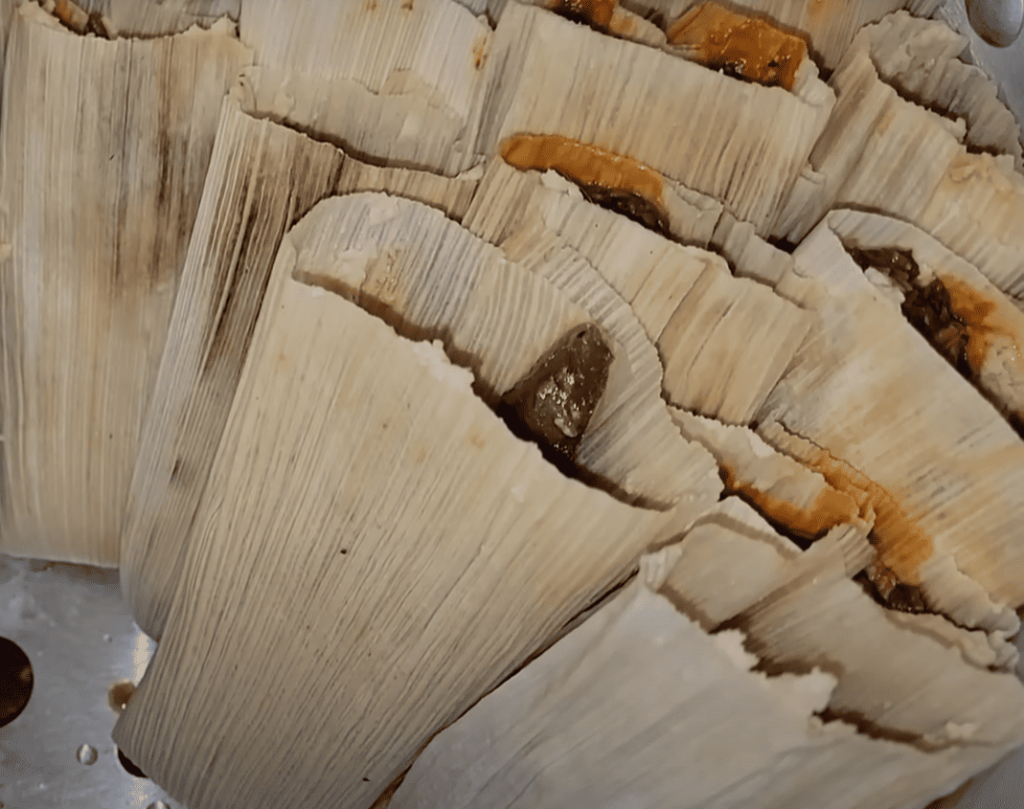
Conclusion
Crafting these steamed treasures connects your kitchen to centuries of tradition. As you master the water level checks and patient 75-minute cook time, you’re joining generations who turned simple ingredients into edible heirlooms.
Success hinges on three essentials: maintain consistent heat under your steamer, listen for the coin’s rattle in the pot, and let those tongs test doneness after cooling. If masa clings to the husk, just steam 10 more minutes—perfection can’t be rushed.
This prep process thrives on teamwork. Invite loved ones to spread masa and fold bundles, creating laughter-filled memories alongside smoky poblano strips. Whether making 12 or 16, each bite carries the warmth of shared heritage.
Now share your masterpiece! Serve them with pride, knowing you’ve preserved a flavor story older than any recipe card. Just don’t forget to lift the lid carefully—that aromatic cloud is your standing ovation.

